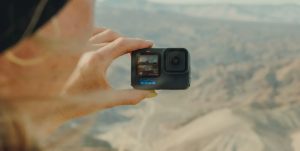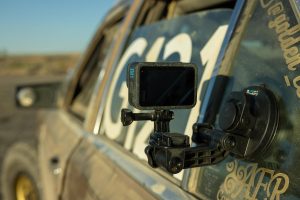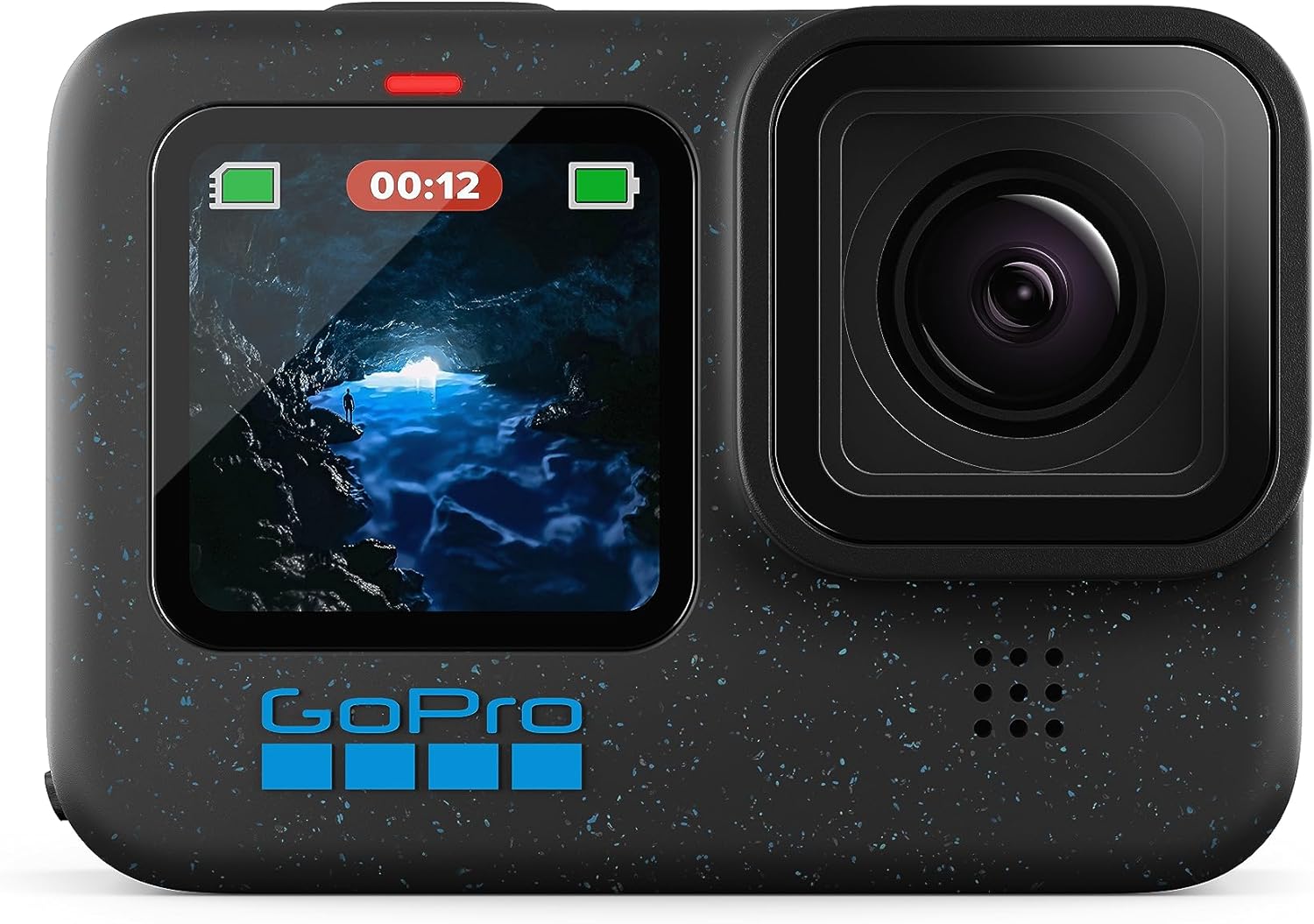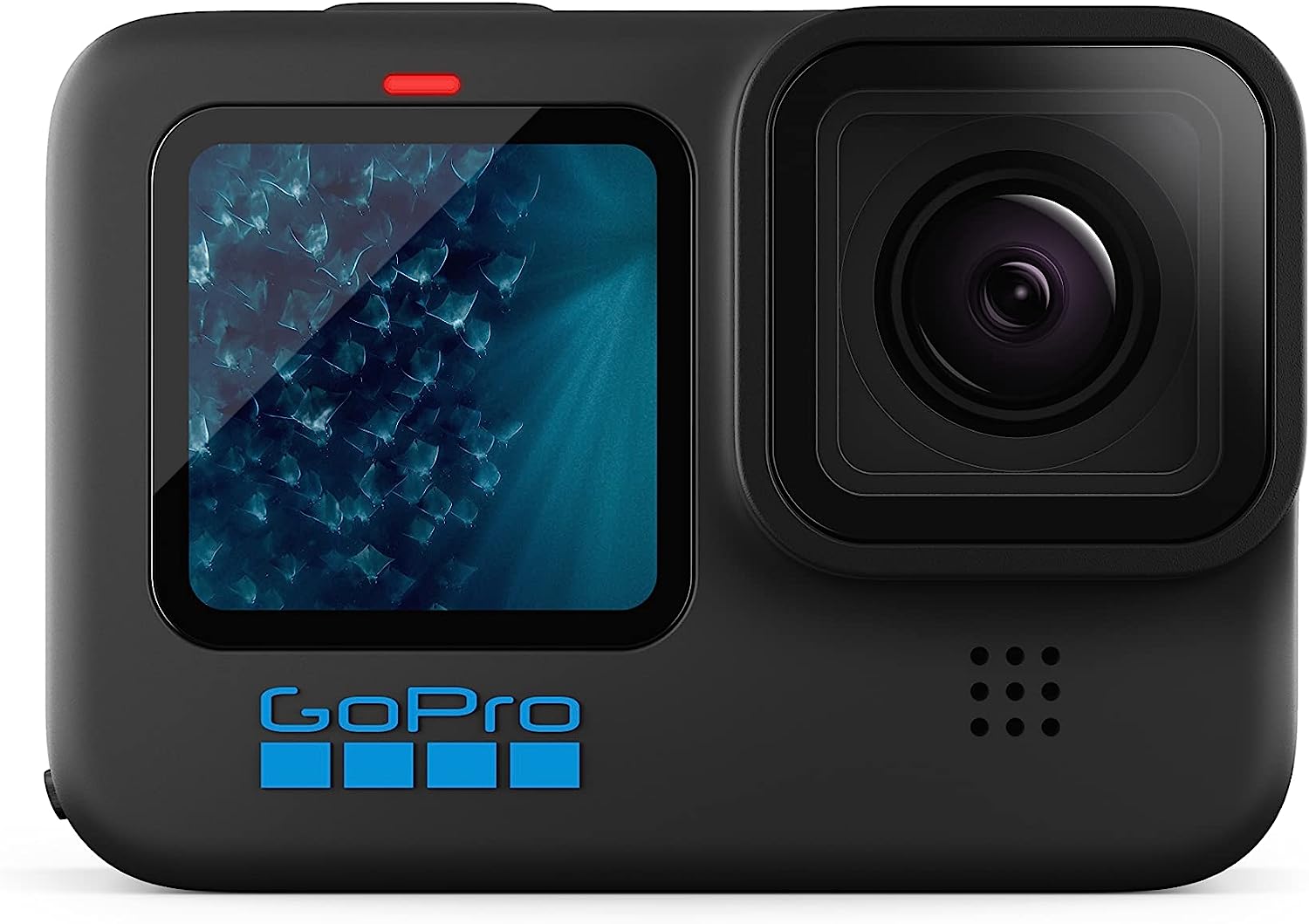We’ve been strapping GoPros onto helmets, handlebars, and hiking packs for years, so you’d think we’d stop getting excited every time a new model drops. But here we are, comparing the GoPro HERO 12 and the HERO 11, both of which look nearly identical—but one hides some clever improvements under the hood that might just change how you shoot.
If you’re trying to decide whether to upgrade, or simply choosing between the two, don’t let the matching shells fool you. These two have more in common than not, but the differences? They hit in just the right places. Let’s break it all down.
Same body, different story inside

Put them side by side and you’d swear they’re twins. Both cameras have the exact same measurements—71.8 x 50.8 x 33.6 mm—and weigh 154 grams. That compact, matte black design with front and rear screens is back, and yes, they’re both waterproof down to 10 meters without extra housing.
But if you squint, the HERO 12 has a subtle speckled blue finish. Not a big deal, but a tiny visual cue if you’re into details. Both feature a 1.4-inch front screen for framing and a 2.7-inch rear touchscreen for control and playback. No changes in build quality or layout.
So yeah, physically they’re nearly carbon copies. But what they do with that body? That’s where things start to shift.
Same resolution, more flexibility
Both the HERO 11 and HERO 12 feature a 1/1.9″ CMOS sensor that shoots up to 27 MP photos and maxes out at 5.3K video at 60 fps. That’s a ton of detail. If you like shooting wide and cropping in post, either one will do the job.
But the HERO 12 sneaks in a handy trick: native 9:16 vertical video support. No need to crop a square or rotate in post—you shoot straight for TikTok, Instagram, or vertical YouTube Shorts.
The HERO 11? It gives you that nice, flexible 8:7 aspect ratio, which works great for reframing. But you still have to do some editing to get vertical video out of it. Not a dealbreaker, but if you post a lot of mobile-first content, the HERO 12 makes life easier.
Also, the HERO 12 expands the use of the 8:7 sensor into more video modes like TimeWarp, Night Lapse, and even Time Lapse. Little changes, big convenience.
HDR video—finally
This is where we raised our eyebrows. The HERO 12 introduces HDR video capture, and that’s not a small thing. It’s the kind of feature you feel more than see—deeper shadows, brighter highlights, and much more detail in high-contrast shots.
If you’re shooting in mixed lighting (say, biking through forests into sunlight), HDR makes a visible difference. Colors are punchier, exposure balances faster, and footage just feels richer.
The HERO 11 doesn’t have HDR video at all, which is fine for most conditions, but the second things get tricky—bright skies, harsh shadows—you’ll start wishing it did.
HyperSmooth keeps getting smoother

GoPro’s HyperSmooth tech has been magic since it launched, and both these cameras come with it—HyperSmooth 5.0 in the HERO 11 and HyperSmooth 6.0 in the HERO 12.
Both are excellent. Both offer AutoBoost and Horizon Lock. But the newer version? It analyzes motion four times faster, which means even quicker stabilization in chaotic situations. Think mountain biking, parkour, or anything handheld while running.
You won’t notice a huge difference in everyday footage. But in more extreme motion, the HERO 12’s footage looks just that bit more fluid and less jittery. And for us, that consistency matters.
Battery: same size, way smarter
This one caught us off guard. Both cameras use the same 1720 mAh Enduro battery, so you’d assume they perform the same.
Nope.
The HERO 11 tops out around 35 minutes shooting 5.3K footage. The HERO 12? It pushes that up to around 70 minutes. Same battery, double the stamina.
That’s all down to better thermal management and smarter power optimization. For longer trips, travel vlogging, or sports sessions, this improvement is huge. Fewer battery swaps, less downtime, more time shooting.
Audio: same mic, better compatibility
From a hardware perspective, both are tied. Each has three mics that balance wind reduction with spatial sound. And yes, stereo capture is clear and punchy on both.
But only the HERO 12 can pair with Bluetooth audio devices like wireless mics and earbuds. That means no more carrying adapters if you want to run a lav mic or narrate with AirPods. The HERO 11 still needs a 3.5mm dongle, which is… not fun when you’re moving fast or trying to stay light.
If you’re shooting YouTube content or vlogs, this wireless audio support alone might push you toward the newer model.
New features that sneak up on you

The HERO 12 also gets a few creative and pro-level extras. Timecode Sync, for example, lets you sync multiple GoPros for multi-angle editing—huge for those doing shoots with multiple cameras.
It also gives you a new “Log” video profile for color grading, which makes sense if you’re deep into post-production. Casual users might not touch it, but creators and editors will.
And of course, you still get all the GoPro classics on both: HindSight, TimeWarp, Night Lapse, voice commands, and the GoPro Quick app for syncing and editing.
So in terms of basics, both are great. But the HERO 12 throws in more tools if you’re the kind who likes to tweak things or build more complex workflows.
Everything they still share
Despite the differences, these are both GoPros through and through. You still get:
– Dual screens (front for framing, back for control)
– Built-in waterproofing to 10 meters
– Night modes, slow motion up to 240 fps, TimeWarp and Time Lapse
– Detachable batteries, USB-C charging, and folding mounting fingers
– Full compatibility with existing GoPro mounts, housings, and mods
They’re both tough, versatile, and ready to shoot pretty much anywhere.
So which one makes more sense?
We’ll say it flat-out: the GoPro HERO 12 is the better camera. But it’s not about a flashy new design or some headline-grabbing leap. It’s about refinement, endurance, and creator-friendly upgrades.
HDR video, double the battery life, Bluetooth audio support, expanded shooting formats, and faster stabilization—those are all upgrades you feel every day, even if they don’t scream “new tech.”
If you already have the HERO 11 and don’t shoot for long stretches or care about HDR, you’re not missing anything urgent. The HERO 11 is still one of the best action cameras on the market.
But if you’re buying new or thinking about which one to take on your next trip, the HERO 12 just feels more future-proof. Less fiddling, more shooting. Less charging, more capturing. It’s the kind of upgrade that doesn’t demand attention—but rewards you every time you press record.
And hey, that’s the kind of camera we want in our backpack.


